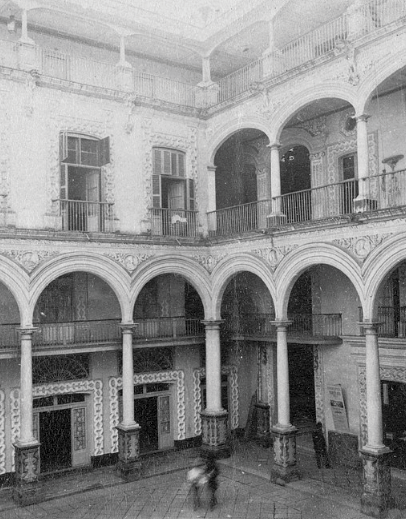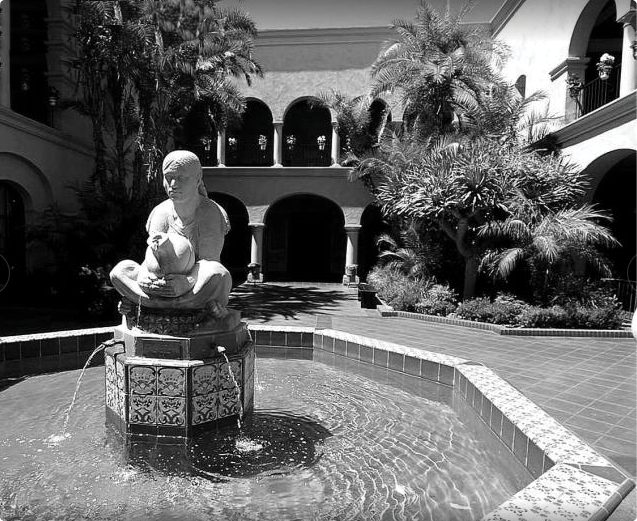…When laying out the Perimeter Block, conceive of the block as a series of courtyards, with some of them penetrating into individual buildings.

__Problem-statement: In busy neighborhoods, there is a need for quiet outdoor space that is part of the building, and for light and air to enter the rooms in the middle of the building. This is the archetypal courtyard building.__
Discussion: We have already discussed why the Perimeter Block is a beneficial pattern, providing an urban connection on one side and private outdoor space on the other. Here we jump down one scale to the individual building that encloses a courtyard, providing the same benefits at a smaller scale.
Courtyard buildings can be seen across many cultures and climates including colder climates, where they typically form small outdoor spaces of L-shaped or U-shaped buildings. In hotter climates, courtyard buildings are often O-shaped, with the outdoor space completely surrounded by the building. In some cases, there are multiple courtyards within the same building.
Courtyard buildings do pose some challenges, including a larger exterior wall area requiring additional insulation in buildings that require heating or cooling. Some courtyard buildings employ operable or retractable roofs over the courtyard, including glazed roofs.
Not often mentioned is the remarkable energy and comfort performance that a courtyard building can achieve (able to remain relatively cool in warm weather, and warmer in cool weather, without high consumption of fuels or other resources)1. It was largely for this reason, as well as for qualities of natural light and ventilation, that the pattern can be seen independently in so many traditional building cultures. In addition, courtyard buildings bring sunlight (modulated by shading devices) directly into otherwise deep buildings.

A courtyard house in California.
The performance of courtyard buildings can be improved with galleries or porches along one or more sides of the courtyard, shading from excessive sun, and also forming a connecting transition zone.
__Therefore: When buildings become too deep to admit air and light, or when they would benefit from private outdoor space within them, lay them out as courtyard buildings. Create porches fronting them, or wrapping two or more sides. If the courtyards are not entirely enclosed by buildings, enclose them with appropriate walls or fences, so that they function as private outdoor spaces.__

Create Indoor-Outdoor Ambiguity within the courtyard building, by using fully or partially glazed roofs. Create a Circulation Network within the spaces surrounding the courtyard. …
notes
¹ The energy performance of courtyard buildings in different climates has been widely studied. See for example Aldawoud, A. (2008). Thermal performance of courtyard buildings. Energy and Buildings, 40(5), 906-910.
See more Building Patterns